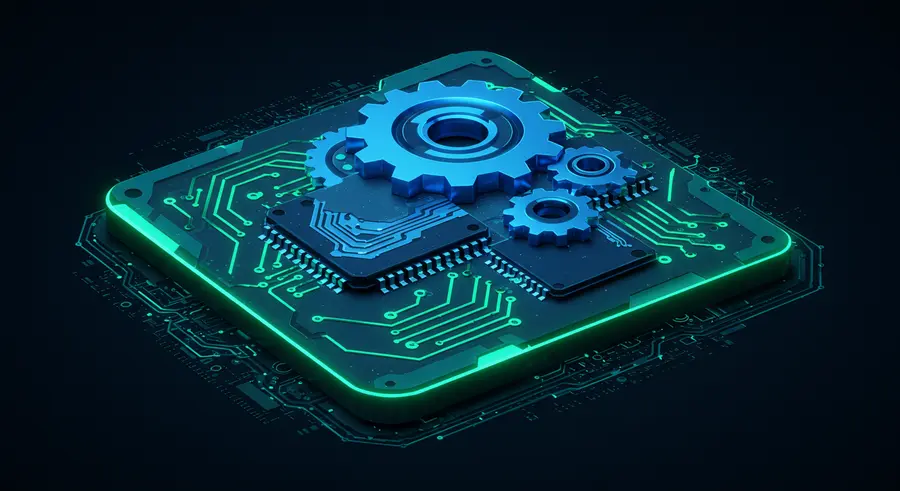Appearance

Welcome, fellow tech explorers! 👋 Today, we're diving deep into an incredibly exciting frontier of web development: Progressive Web Apps (PWAs) and their remarkable ability to integrate with device hardware. If you've been following the evolution of web technologies, you know PWAs have revolutionized how we perceive and interact with web experiences. They bridge the gap between traditional websites and native mobile applications, offering the best of both worlds.
But what truly sets modern PWAs apart is their ever-expanding capability to tap into the underlying device hardware, transforming simple web pages into powerful, feature-rich applications. Let's embark on this journey to discover how!
💡 The Evolution of PWAs: More Than Just Offline Access
Initially, PWAs gained popularity for their core features:
- Offline Access: Thanks to Service Workers, PWAs can cache resources and work even without an internet connection, providing a resilient user experience.
- Installability: Users can "install" a PWA to their home screen, giving it a native app-like presence.
- Push Notifications: Re-engaging users with timely and relevant updates.
While these foundational features are powerful, the landscape is rapidly evolving. Modern web APIs are empowering PWAs to do much more, directly interacting with device hardware in ways previously thought exclusive to native apps.
🌐 Bridging the Gap: How PWAs Access Hardware
PWAs achieve hardware integration through a set of powerful Web APIs. These APIs act as secure bridges, allowing web applications to request and utilize device functionalities with user permission.
1. Geolocation API: Location-Aware Experiences 🗺️
The Geolocation API allows PWAs to access the user's current location. Think of map applications, local service finders, or even delivery services that pinpoint your exact address. This enables highly personalized and context-aware experiences.
2. Camera & Microphone Access: Rich Media & Communication 📸🎤
Modern PWAs can access the device's camera and microphone, enabling features like:
- QR Code Scanners: Quickly scan codes for information or actions.
- Image Uploaders: Directly take photos within the PWA for profile pictures or documentation.
- Video Conferencing: Basic video and audio calls directly in the browser, though more complex features might still lean on native apps.
3. Push Notifications & Background Sync: Staying Connected 🔔🔄
While not direct hardware access, these features leverage system-level capabilities:
- Push Notifications: Send real-time alerts and updates, even when the PWA is not actively in use, keeping users informed and engaged.
- Background Sync: Allows the PWA to defer actions (like sending data) until the user has a stable internet connection, crucial for offline-first applications.
4. Device Sensors: A World of Possibilities 🧭💡
Newer APIs are opening doors to more advanced sensor integration:
- Orientation Sensor API: Access data from the device's accelerometer, gyroscope, and magnetometer for motion-aware applications (e.g., games, augmented reality elements).
- Ambient Light Sensor API: Adjust screen brightness based on ambient light conditions, improving readability and saving battery.
- Proximity Sensor API: Detect if an object is near the device, useful for call handling or interactive experiences.
5. Advanced System Integration: Beyond the Basics 🔗
The web platform is continuously expanding its capabilities:
- Web Share API: Share content from your PWA to other installed applications on the device, just like a native app.
- Web Bluetooth API: Interact with Bluetooth Low Energy (BLE) devices directly from your PWA. Imagine a PWA controlling smart home devices or fitness trackers!
- Web USB API: Connect and communicate with USB devices. This is a game-changer for applications requiring direct hardware control, like industrial tools or specialized peripherals.
- File System Access API: Provides PWAs with the ability to directly read and write files on the user's local file system, offering a more robust experience for document editing or media management.
🌟 Real-World Impact and Future Outlook
The blend of web flexibility with native-like hardware access means PWAs are becoming incredibly versatile. Companies like Starbucks, Pinterest, and Twitter have already demonstrated the power of PWAs in improving user engagement and performance.
The future of PWAs is bright, with ongoing efforts to expose even more device capabilities securely and efficiently. We can expect deeper integrations with AI/ML for personalized experiences, further enhancements in performance through technologies like WebAssembly, and a continued blurring of lines between web and native.
For a deeper dive into the power of PWAs, check out our catalogue page: The Power of Progressive Web Apps (PWAs)
The era of web applications that feel and behave like native apps is here, and it's only going to get more exciting! Get ready to build the next generation of web experiences that truly unleash the full potential of every device. 🚀